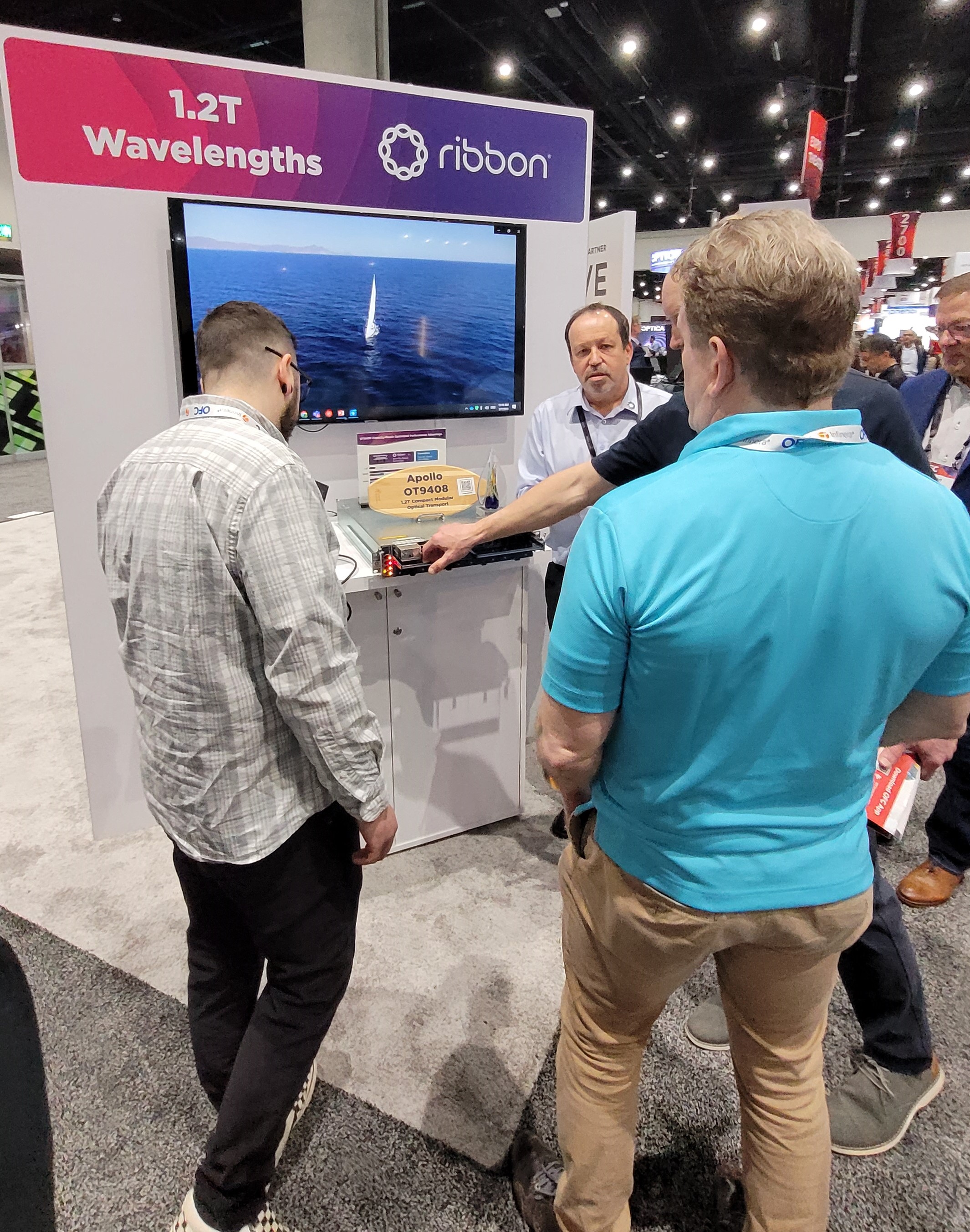OFC Recap: Increasing Transport Capacity while Lowering the Cost per Bit
Optical networks are the unsung hero of the Internet age, enabling massive volumes of business, personal and entertainment information to flow virtually for free around the globe. Once again, this year’s OFC conference demonstrated how our optical networking industry keeps rising to the challenge of handling ever increasing traffic flows while lowering the cost per bit! This year’s OFC showed three ways how optical networks are achieving that:
- Working around the Shannon Limit. We are at physics limit of fiber efficiency in terms of bits-per-Hertz. Yet, we have found a way around that by exploiting advances in silicon to develop ever more sophisticated DSPs that increase the baud rate of digital coherent transmission. Faster baud rates enable creating wavelengths that go faster and further. This means we need fewer wavelengths to handle more capacity, and since wavelengths are the most expensive part of optical networks, we lower the cost per bit.
OFC showed us that within 2023 we will see the commercial introduction of 5nm-140Gbaud transceivers that support 1.2T wavelengths for the first time, as well as 800G wavelengths that span several thousand kilometers, three times further than current solutions.
wavelengths that span several thousand kilometers, three times further than current solutions.
- Expanding Fiber Capacity. In many cases, the preferred C-band spectrum is starting to fill up. Rather than resort to the undeniably expensive option of laying new fibers, the industry is coming up with innovative ways to use the neighboring and only slightly less efficient L-band.
OFC showed us multiple solutions encompassing amplifiers and ROADMs for how the C and L bands can work together seamlessly, effectively doubling the traffic carrying capacity of existing fibers.
- Creating Open Multivendor Networks. Optical networks are now supporting an unprecedented degree of openness. Wavelengths from multiple vendors can run freely over open optical line systems and even interwork with each other. This enhances network performance through adopting best-of-breed innovations, and lowers costs through price competition.
OFC showed us how this can happen in the first ever OFCnet, and in a new lineup of interworking demos from the OpenROADM MSA consortium.
From a Ribbon perspective, it was a wonderful experience to meet and discuss our latest innovations with over fifty customers who visited our booth. This includes showing off our new Apollo 9408 compact modular transport platform featuring 1.2T wavelengths, our C+L band solution that allows hitless upgradability, and our IP Wave Live demo, featuring automation and multivendor integration. We are also proud of the paper we co-authored with Bharti Airtel describing a disaggregated optical networking field trial we conducted with them.
Customers and partners should feel free to reach out to me directly with any post-OFC questions.


